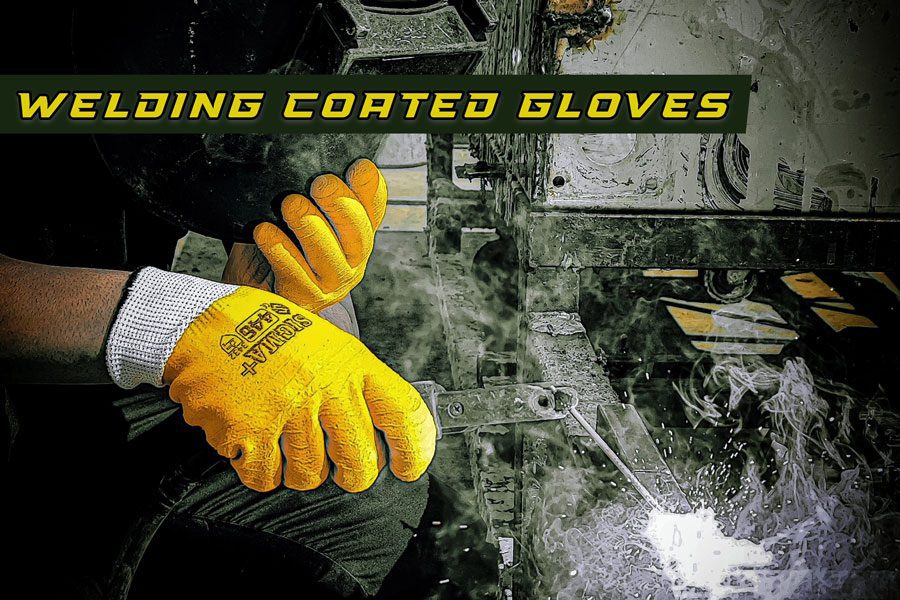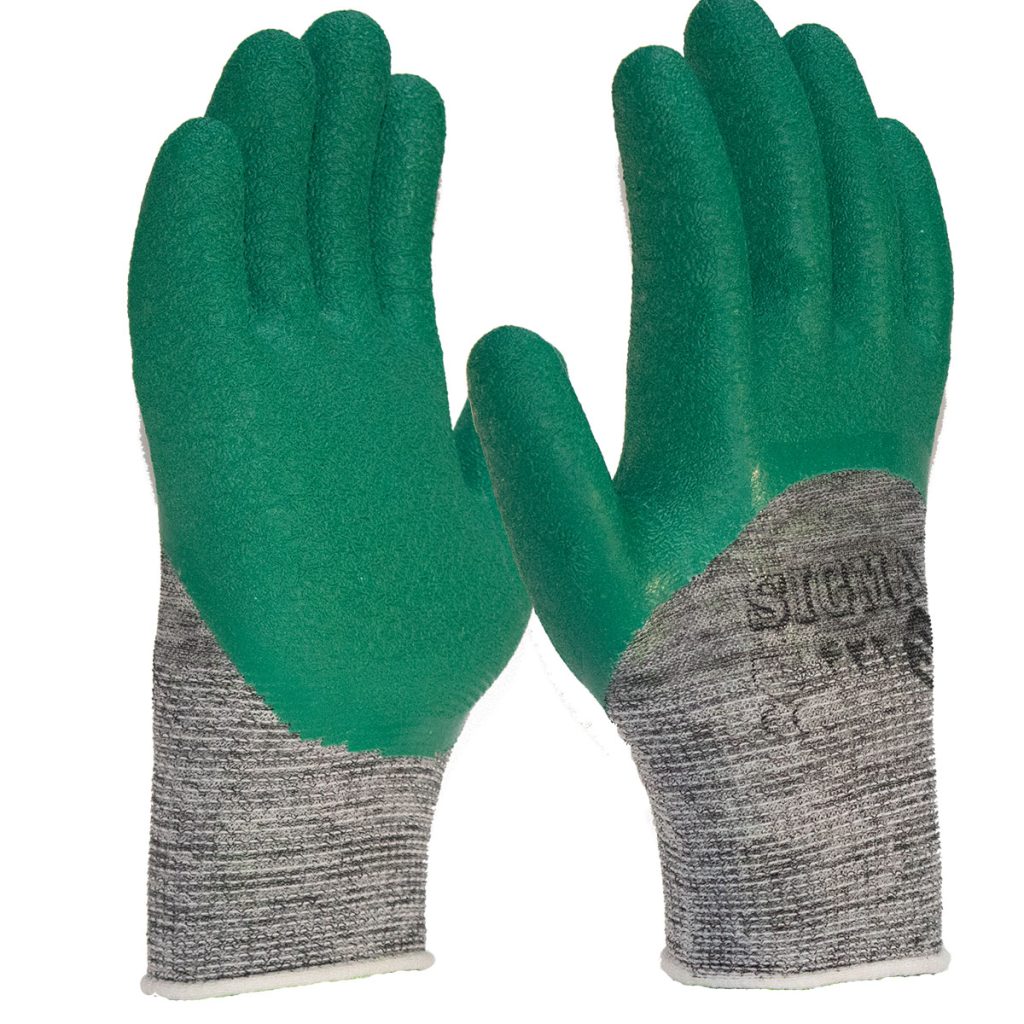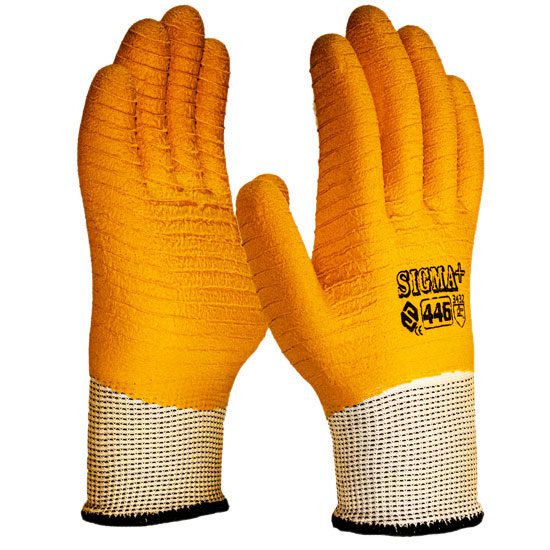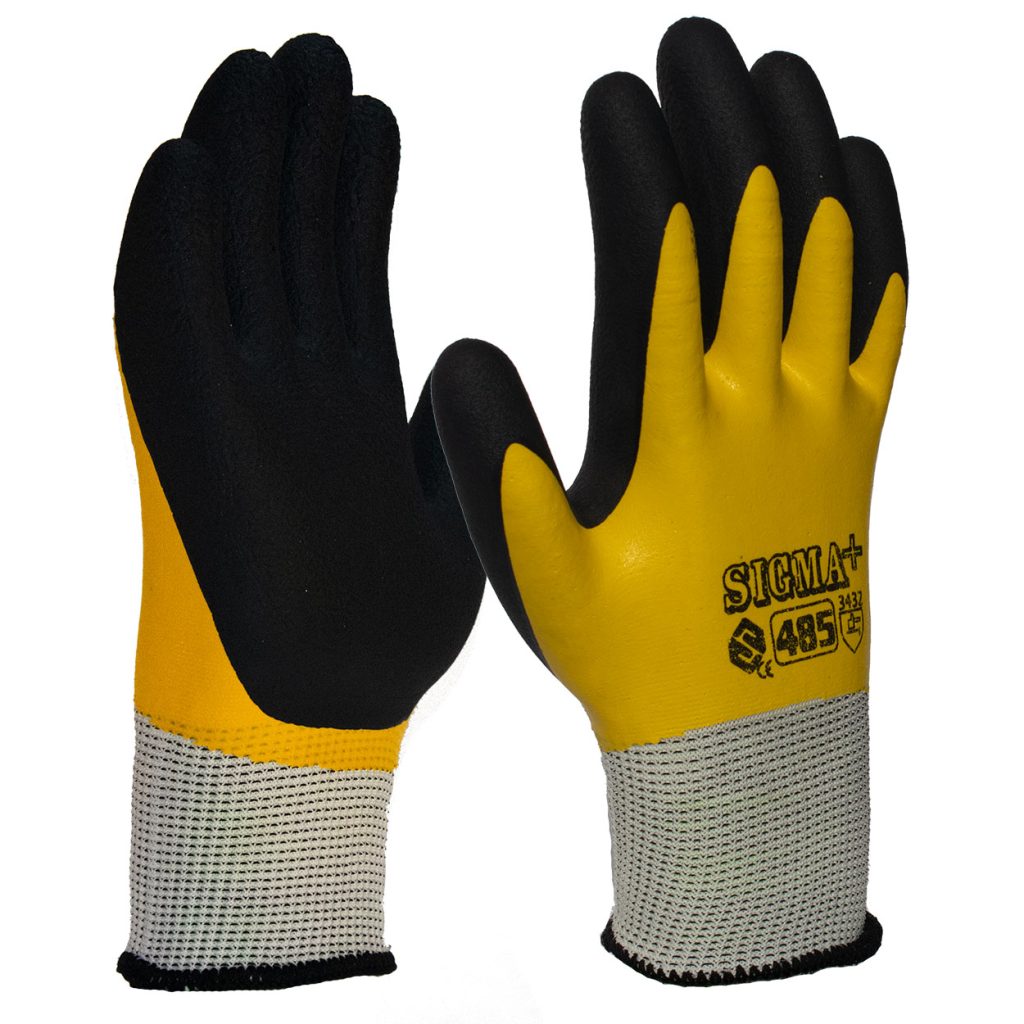Welding gloves
Welding gloves

Welding gloves are an essential tool for protecting the hands of welders and preventing accidental contact with hazardous materials used in the welding process. Welding gloves come in different types, which are categorized based on the number of layers, materials used, and different sizes.
The features of welding gloves:
- Resistance to welding hazards: Welding gloves should be made from materials that resist hazards such as heat, acids, and hot metals.
- Full protection: Welding gloves should be fully covering the hand and wrist, and be designed to prevent contact with hazardous materials.
- Mobility: Welding gloves should fit snugly but also allow for free movement to ensure accuracy in welding operations.
- Slip-resistant: Welding gloves should be slip-resistant to help prevent welding accidents caused by loss of grip.
- Water-resistant: Welding gloves should be water-resistant to protect the hands from exposure to hazardous materials.
- Reusability: Welding gloves should be reusable to reduce costs.
In general, choosing the appropriate welding glove should be based on the type of welding process and the materials used in the welding process.
What are the different types of welding gloves?
There are several different types of welding gloves available, each designed to provide protection against specific welding hazards. Here are some examples of the different types of welding gloves:
- Leather welding gloves: Made from leather, these gloves are designed to provide protection against heat and sparks generated during welding. They are suitable for welding heavy and dense metals.
- Neoprene-coated welding gloves: These gloves are coated with neoprene and are designed to provide protection against light to medium metals. They are suitable for welding tasks that require dexterity and flexibility.
- Latex-coated welding gloves: These gloves are made up of multiple layers of materials, including latex, neoprene, and nylon. They provide excellent protection against welding hazards such as hot metals and related injuries.
- Polyurethane-coated welding gloves: These gloves are coated with polyurethane and are suitable for welding heavy and dense metals.
- Kevlar welding gloves: Made from Kevlar, these gloves are designed to provide protection against cuts and heat. They are suitable for welding tasks that require both heat and cut resistance.
- Aluminized welding gloves: These gloves are designed to provide protection against high temperatures generated during welding. They have a reflective surface that helps to reduce heat transfer.
- Cotton and canvas welding gloves: These gloves are made from cotton or canvas and are suitable for light welding tasks. They provide basic protection against heat and sparks.
In summary, the type of welding glove you choose should depend on the specific hazards present in the welding task, the type of material being welded, and the dexterity required for the task.
Latex coated welding gloves
Latex-coated welding gloves are a type of welding glove that provides excellent protection against welding hazards such as hot metals and related injuries. These gloves are made up of multiple layers of materials, including latex, neoprene, and nylon. The latex coating on the gloves provides excellent grip and is resistant to punctures and tears.
Latex-coated welding gloves are a popular choice for welding tasks that require dexterity and flexibility. They are also suitable for light to medium metals. The gloves are designed to fit snugly and provide full hand and wrist coverage to prevent contact with hazardous materials.
One of the advantages of using latex-coated welding gloves is that they are reusable and can be washed and dried for repeated use. They are also more affordable than some of the other types of welding gloves available.
However, it is important to note that latex can cause allergic reactions in some individuals. Welders who are allergic to latex should avoid using latex-coated welding gloves and choose an alternative type of welding glove that is not made with latex.
Overall, latex-coated welding gloves are a good option for welders who need protection against welding hazards and require dexterity and flexibility in their work.
The features of latex coated welding gloves
Coated latex welding gloves are designed to provide protection for the hands during welding and other industrial tasks. Some common features of coated latex welding gloves include:
1. Latex coating: These gloves are coated with latex on the palm and fingers, providing a strong grip and protection against heat, punctures, and cuts.
2. Heat resistance: Coated latex welding gloves are designed to be heat resistant, providing protection against hot surfaces and welding sparks.
3. Long cuffs: These gloves often have long cuffs that extend up the arm, providing additional protection for the wrist and forearm.
4. Flexible and comfortable: Coated latex welding gloves are typically flexible and comfortable, allowing for ease of movement and dexterity while wearing them.
5. Durable: These gloves are designed to be durable and long-lasting, withstanding the wear and tear of industrial environments.
6. Sizes: Coated latex welding gloves come in a range of sizes to fit different hand sizes, ensuring a comfortable and secure fit.
Overall, coated latex welding gloves are designed to provide protection and comfort during welding and other industrial tasks. They are strong, durable, and heat-resistant, making them an essential piece of personal protective equipment for welding professionals and other workers in industrial settings.
Applications of coated latex welding gloves
Coated latex welding gloves are widely used in various industrial applications where workers need protection against heat, punctures, cuts, and other hazards. Some common applications of coated latex welding gloves include:
1. Welding: These gloves are commonly used for welding applications, providing protection against sparks, heat, and other hazards.
2. Manufacturing: Coated latex welding gloves are used in various manufacturing processes, such as handling sharp or abrasive materials, to provide protection for the hands.
3. Construction: Workers in the construction industry use coated latex welding gloves for various tasks, such as handling concrete, bricks, and other materials.
4. Automotive: Coated latex welding gloves are used in the automotive industry for tasks such as handling sharp or hot metal parts, working with oils and lubricants, and other tasks that require protection for the hands.
5. Maintenance and repair: These gloves are also commonly used in maintenance and repair tasks, such as plumbing, electrical work, and other tasks that require protection for the hands.
6. Agriculture: Coated latex welding gloves are used in the agriculture industry for tasks such as handling sharp tools and equipment, working with pesticides and fertilizers, and other tasks that require protection for the hands.
Overall, coated latex welding gloves are versatile and have many applications in various industries. They provide protection for workers’ hands against a range of hazards and are an essential piece of personal protective equipment in many workplaces.
Are there any safety guidelines for using coated latex welding gloves?
Yes, there are safety guidelines for using coated latex welding gloves to ensure that they provide adequate protection for the hands and prevent accidents and injuries. Some of these guidelines include:
1. Proper fit: It is important to choose gloves that fit properly to ensure adequate protection and comfort. Gloves that are too loose or too tight may not provide adequate protection or may impede movement.
2. Inspect gloves before use: Gloves should be inspected before use to ensure that they are in good condition and free from defects such as tears or holes.
3. Follow manufacturer instructions: Coated latex welding gloves should be used in accordance with the manufacturer’s instructions for maximum protection and effectiveness.
4. Avoid contact with hazardous materials: Coated latex welding gloves are designed to provide protection against heat, punctures, and cuts. However, they may not provide adequate protection against certain chemicals and other hazardous materials. Always check the glove’s chemical resistance before use.
5. Replace gloves as needed: Coated latex welding gloves should be replaced when they become worn, damaged, or contaminated. Wearing damaged gloves can result in inadequate protection and may lead to accidents and injuries.
6. Proper storage: Coated latex welding gloves should be stored in a clean, dry place away from direct sunlight and heat sources. This will help extend their lifespan and ensure that they are in good condition when needed.
Overall, following these safety guidelines can help ensure that coated latex welding gloves provide adequate protection for the hands and prevent accidents and injuries in the workplace.



